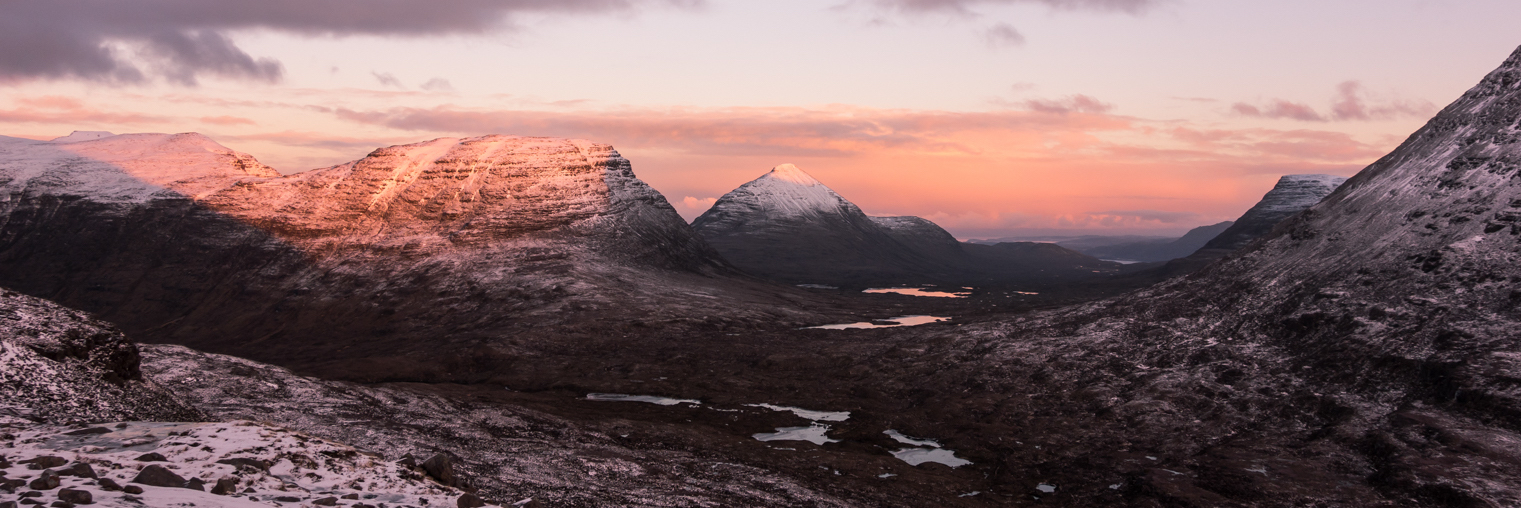With a sustained period of bitterly cold weather and relatively little snowfall, it was only a matter of time before water ice routes began to come into condition. An enterprising team had made the trek into Coire Kander earlier in the week and reported reasonable conditions and plenty of ice, so after another four days of sub-zero temperatures the routes were sure to be even fatter. Bill and Cal were kind enough to answer my shout for partners and with psyche running high we started the 10km approach up Glen Callater.
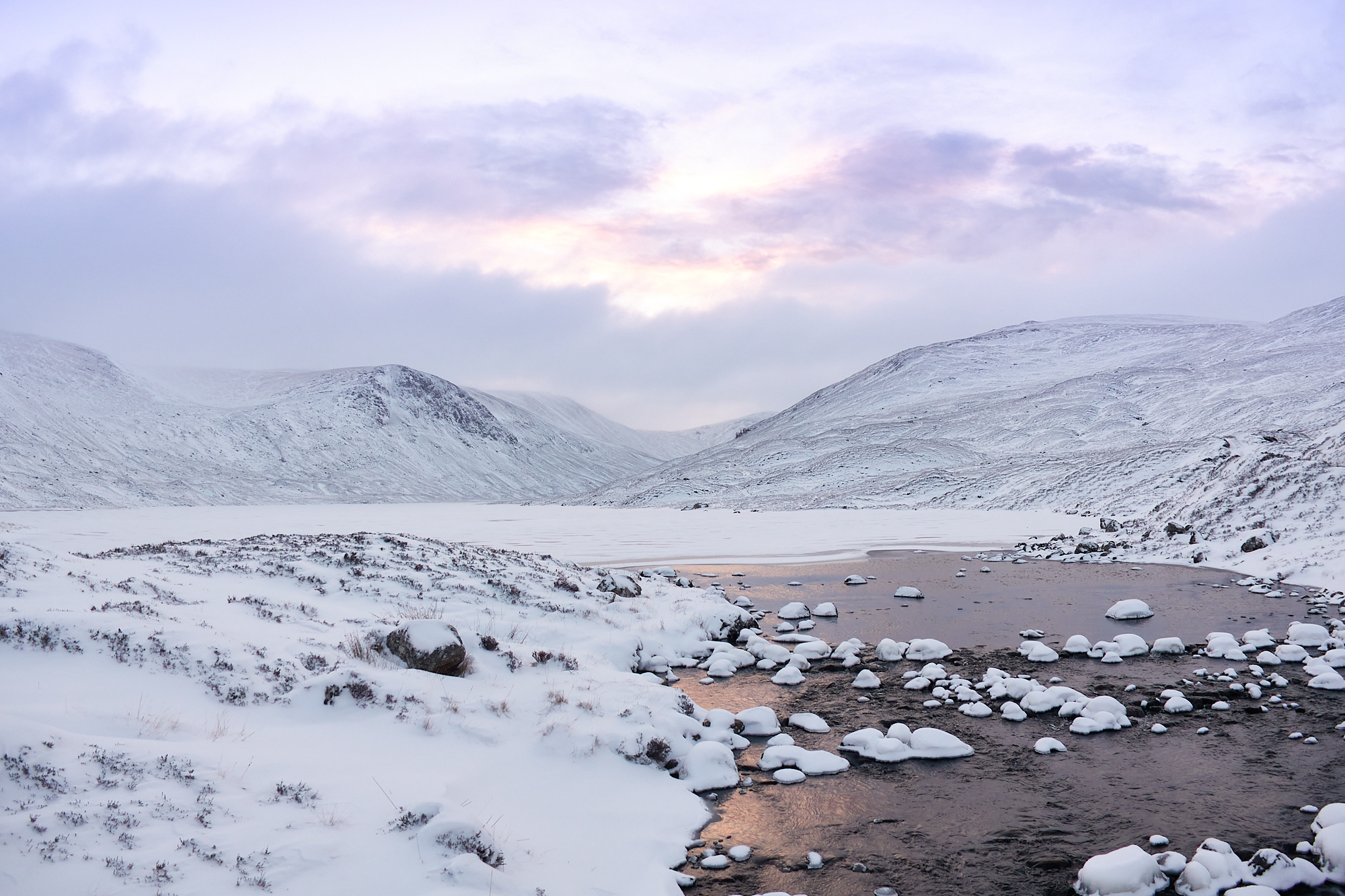
The first half of the approach is on gently rising landrover track and despite the fresh snowfall the walking was easy enough. Once past Loch Callater the path disappeared and the going became much more arduous through deep drifts and heather. Thankfully the scenery was very impressive with icy crags and expansive views opening up around us. The final few kilometres were the toughest of all and we spent as long on them as we did the rest of the four-hour approach.
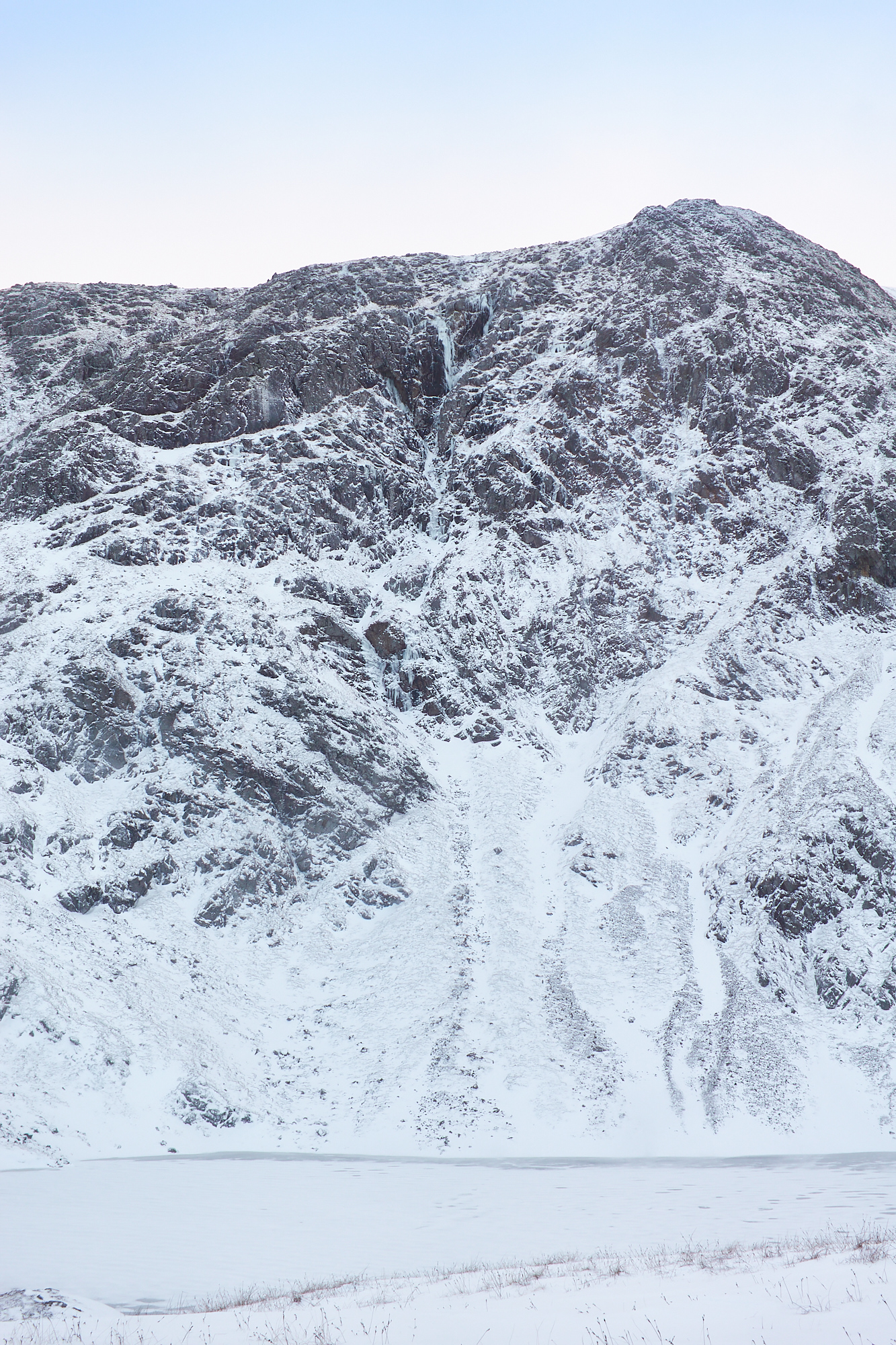
As we contoured around the hillside and the main Coire Kander cliffs came into view, we were struck by the amount of ice – almost every drainage line was filled with blue streaks and many looked climbable. The Bastion, a hulking mass of broken crag bands and snowy ramps, is home to a handful of routes, but a fat blue icicle drooling down the steepest part of the headwall drew our eyes. I would be interested to know if this has been climbed, as it certainly didn’t look reasonable at V, 4 – the grade of Bastion Direct…
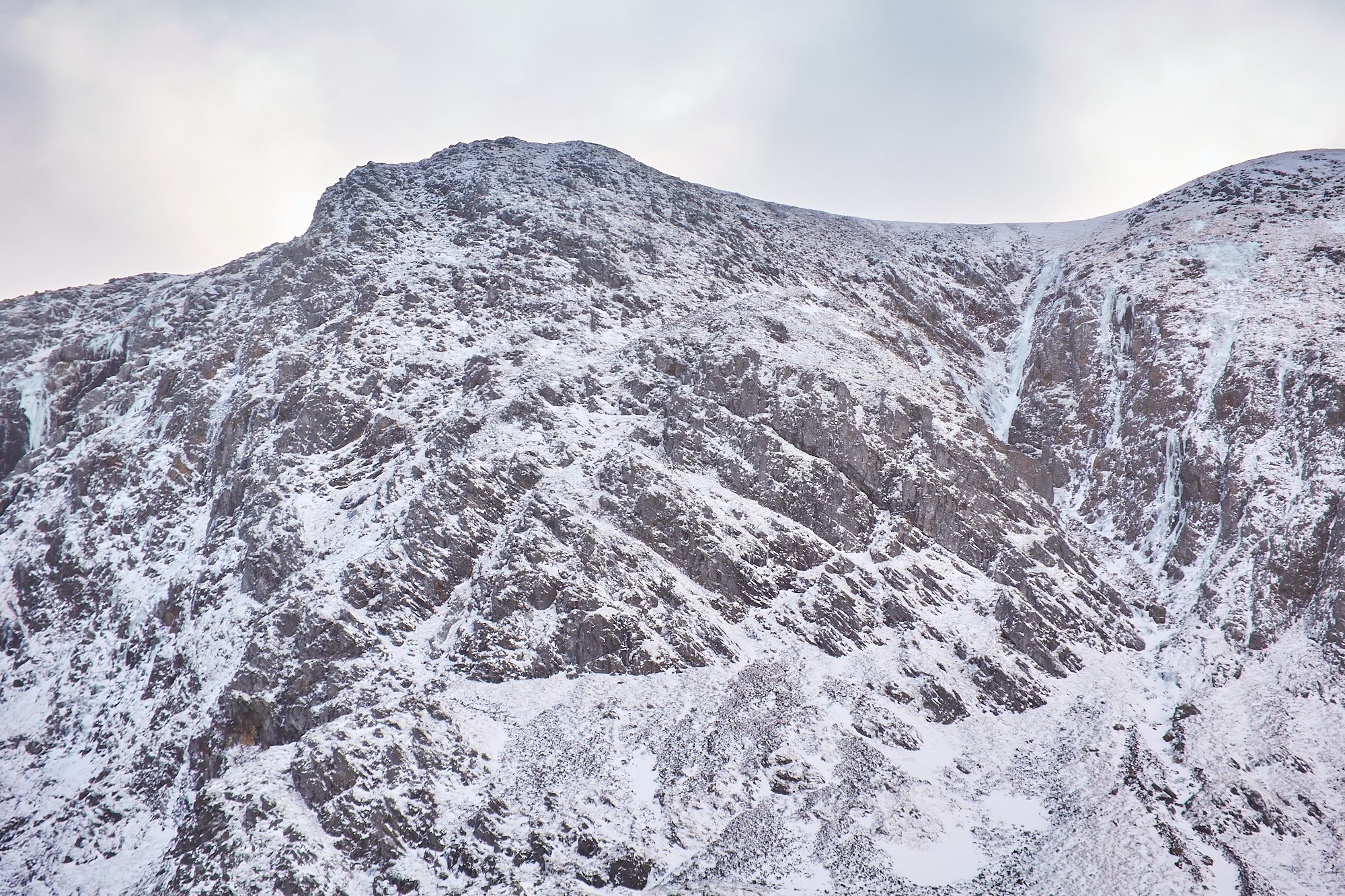
Hidden behind The Bastion for much of the approach, Twisting Gully (I) appeared lean and icy and much more sporting than the snow-plod it’s graded for. It’s right flank contained a number of icefalls and from what I could see in the SMC database the steep icy-mixed line in the middle of the wall doesn’t appear to have been climbed.
As we finally neared the Y-Gully and Back Wall areas, it was clear the routes there were also in great shape – at least five more routes looked complete, with the fat blue ice of Pick Breaker (IV, 4) taking centre stage. Game on!
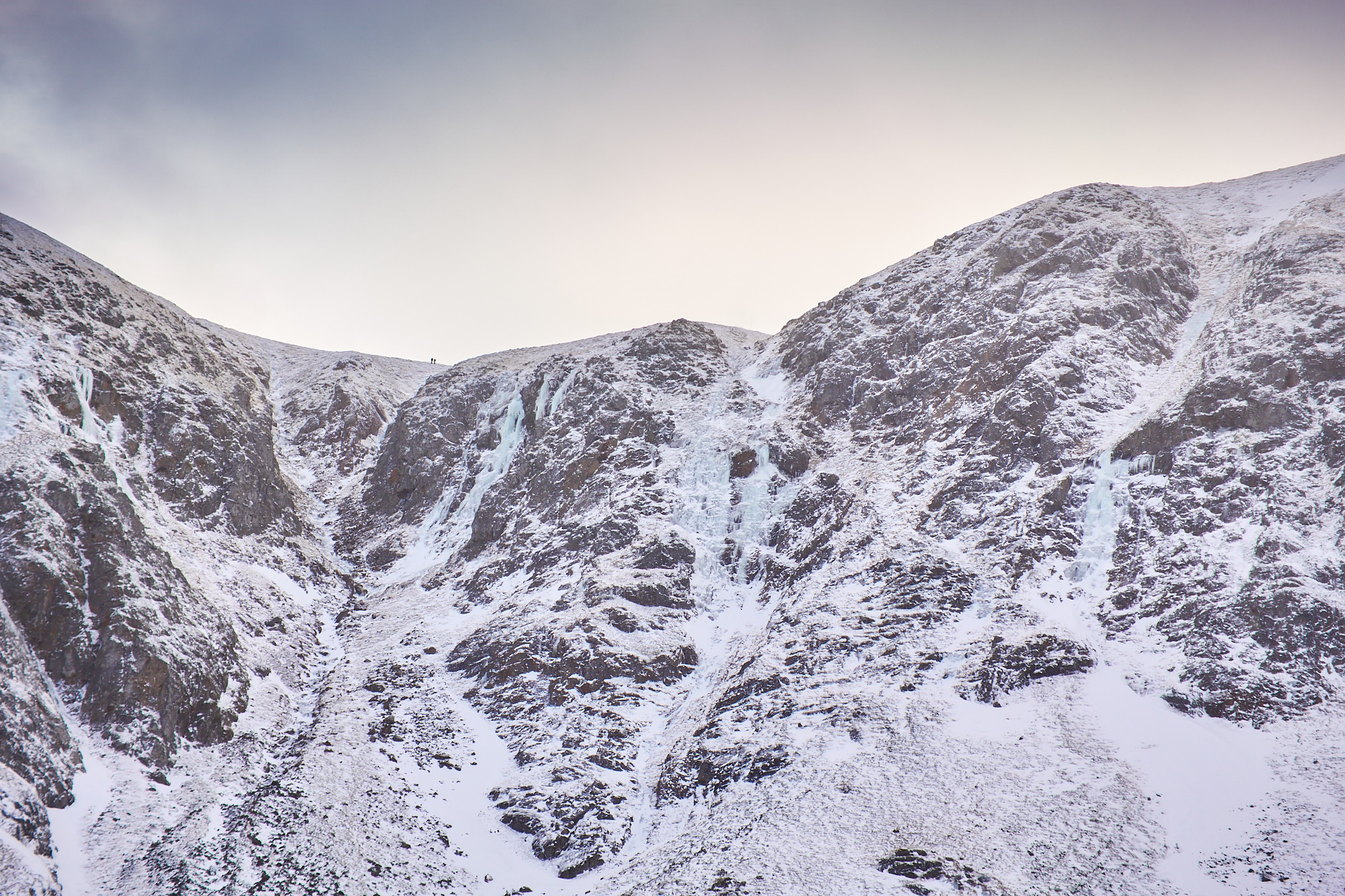
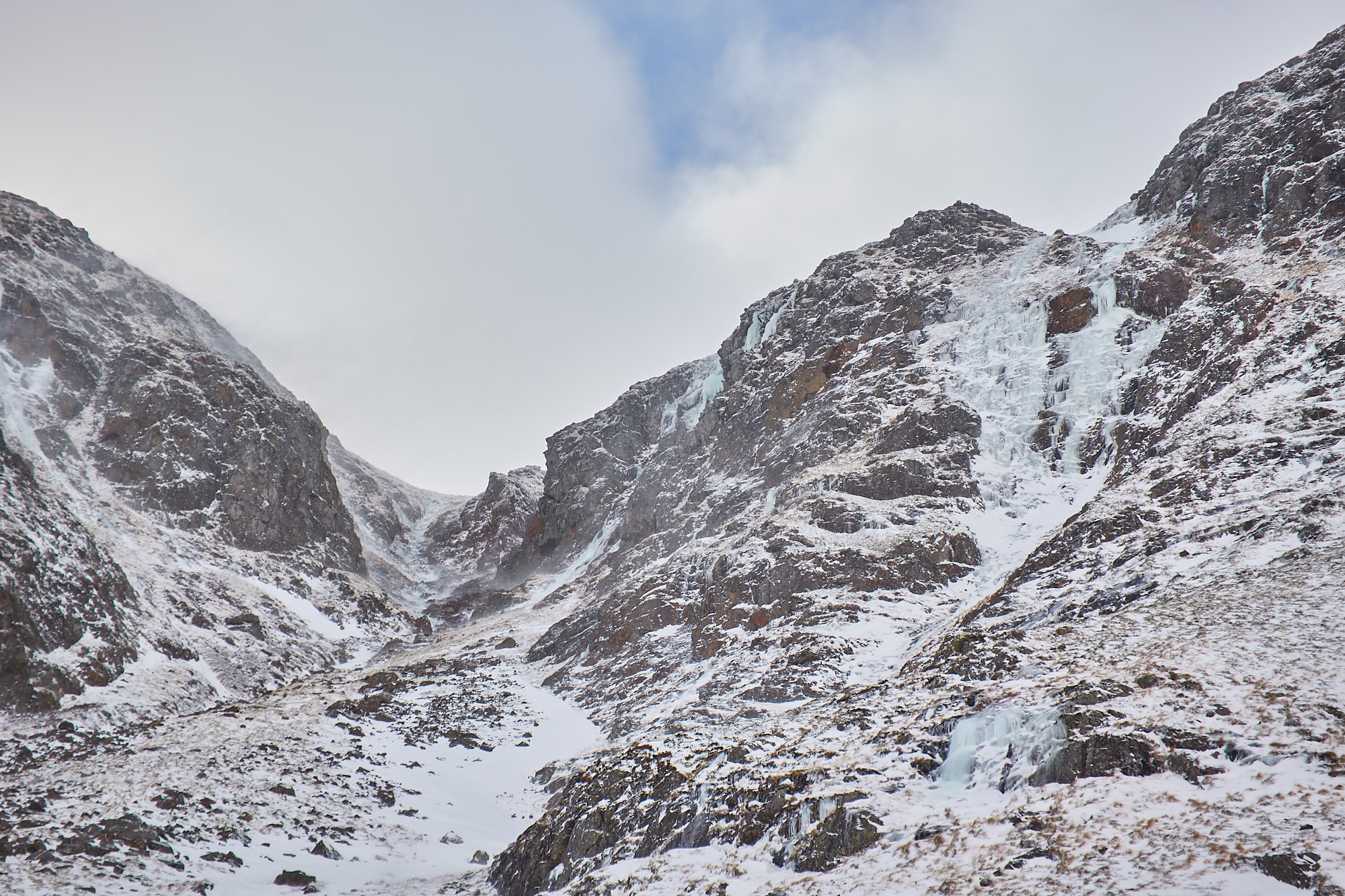
As we geared up at the base of the approach gully we were joined by another team who had come up and over the top from Glenshee. They had intended to descend Y-Gully, but owing to the icy conditions were forced to find their way down via a ramp system behind the Back Wall. The first pitch was clearly long and potentially solo-able at around II, but given there was still water running behind some of the ice we erred on the side of caution and pitched it out.
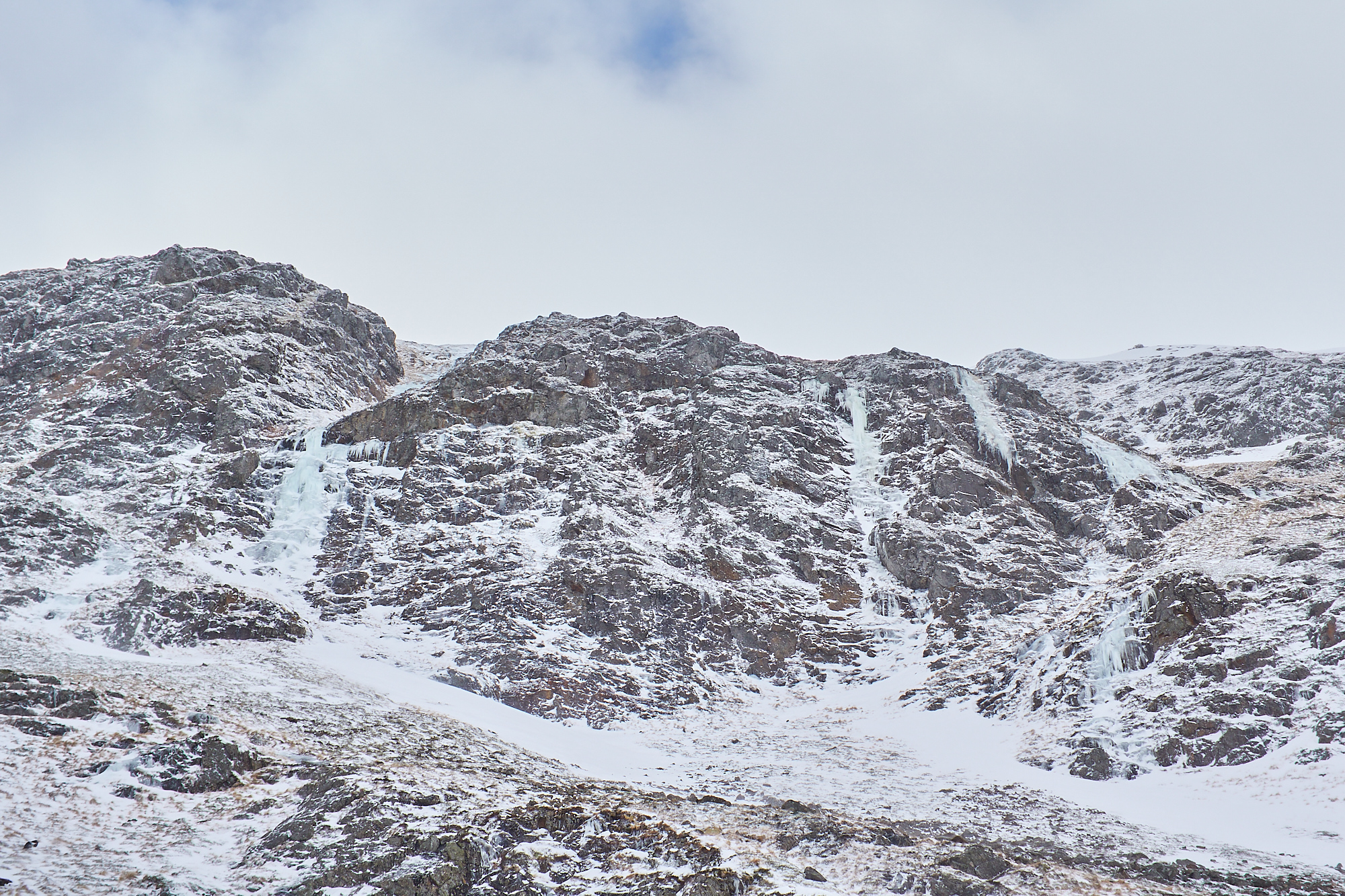
After a few deviations out of the drainage line to find protection and the odd delicate stream crossing, I eventually found a rock belay on the left wall. Bill and Cal soon joined me below the main ice pitches, which thankfully looked in much better shape. There was still some running water beneath parts of the icefall, but now the ice was thick and wide enough for it not to be too concerning.
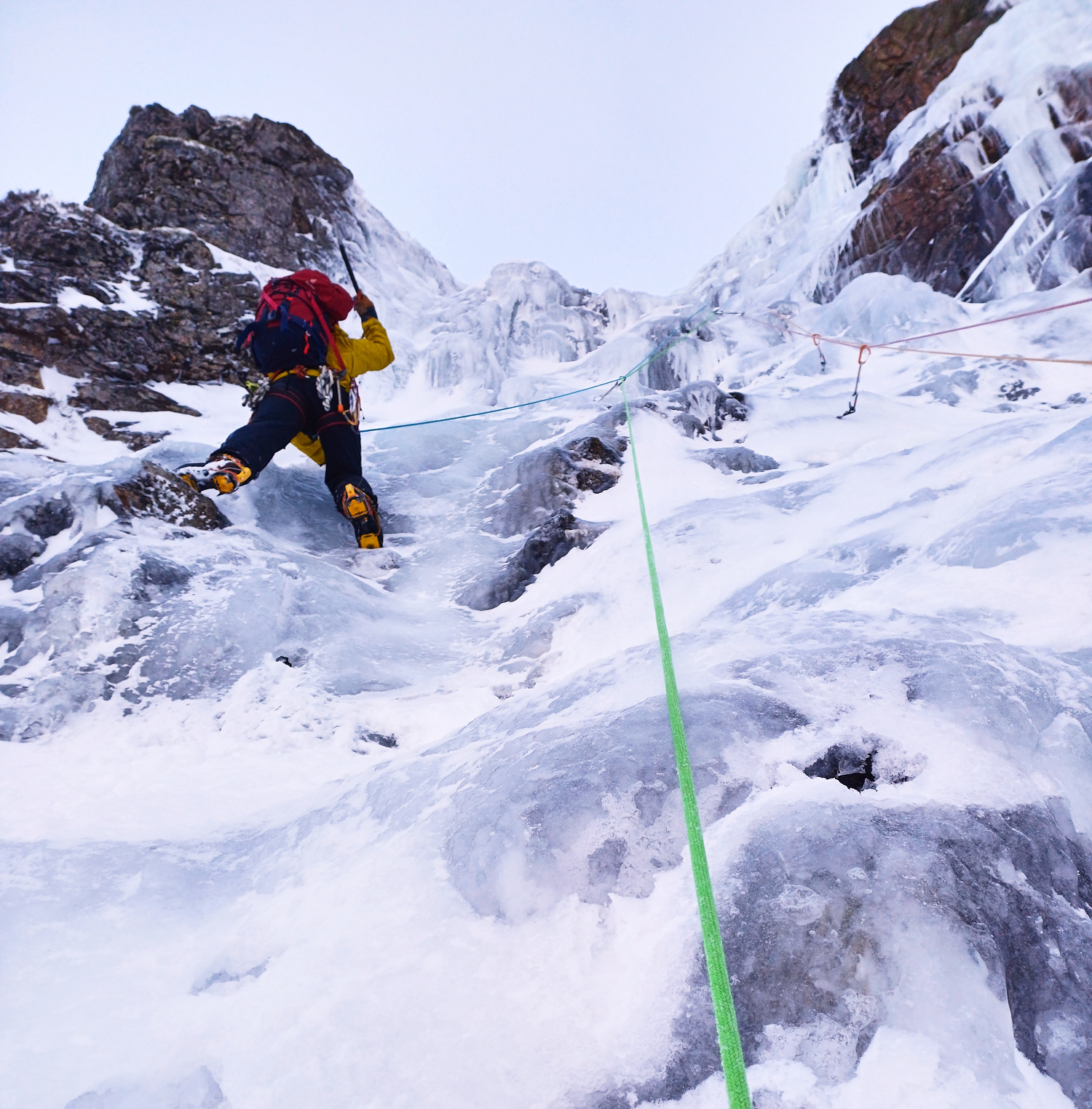
The guidebook mentions a “grand” belay ledge at the start of the third pitch and it certainly didn’t disappoint, easily accommodating both teams. The view back down the glen was excellent and the view ahead one of steeper ice, with plenty of funky features.
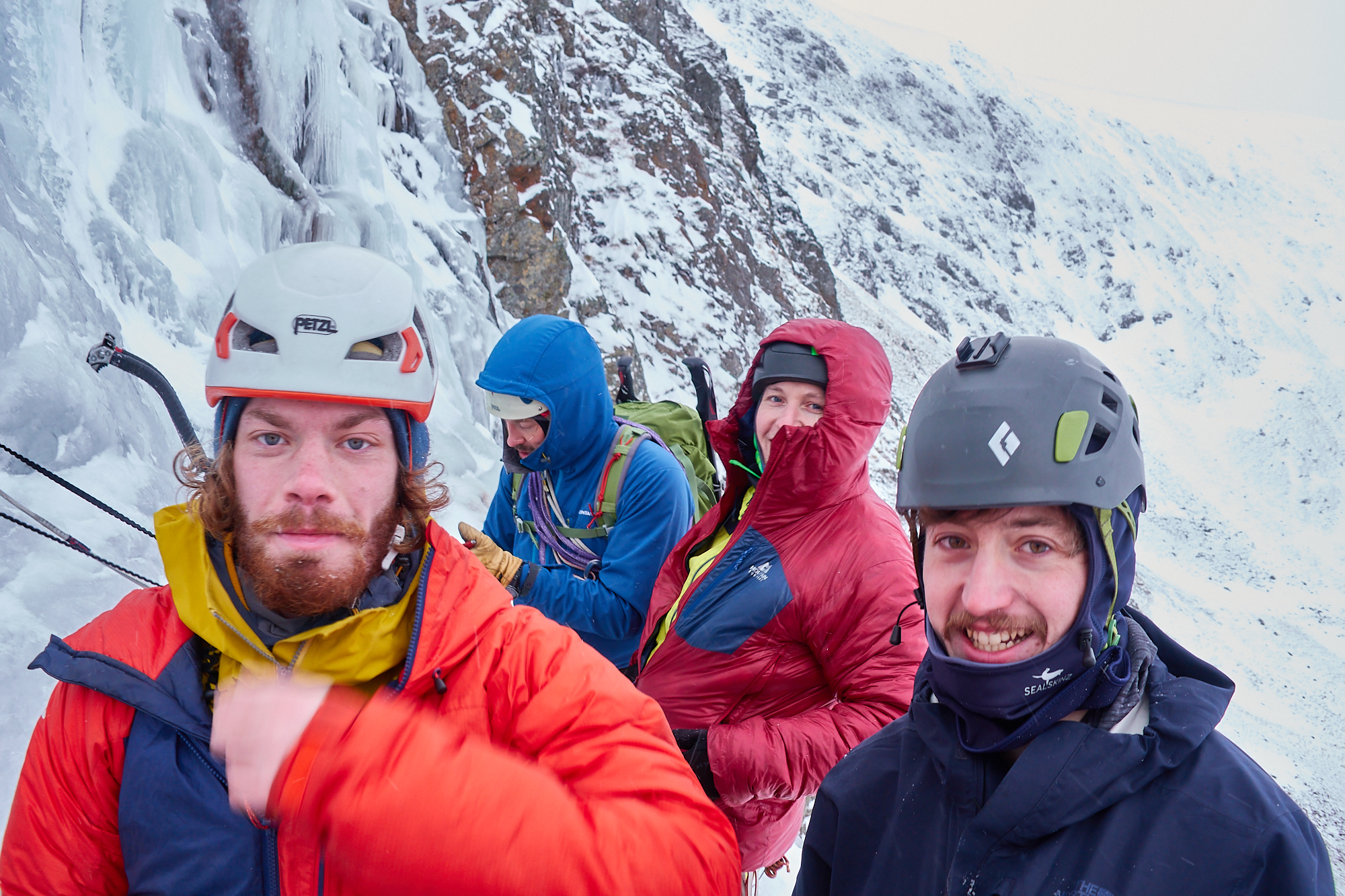
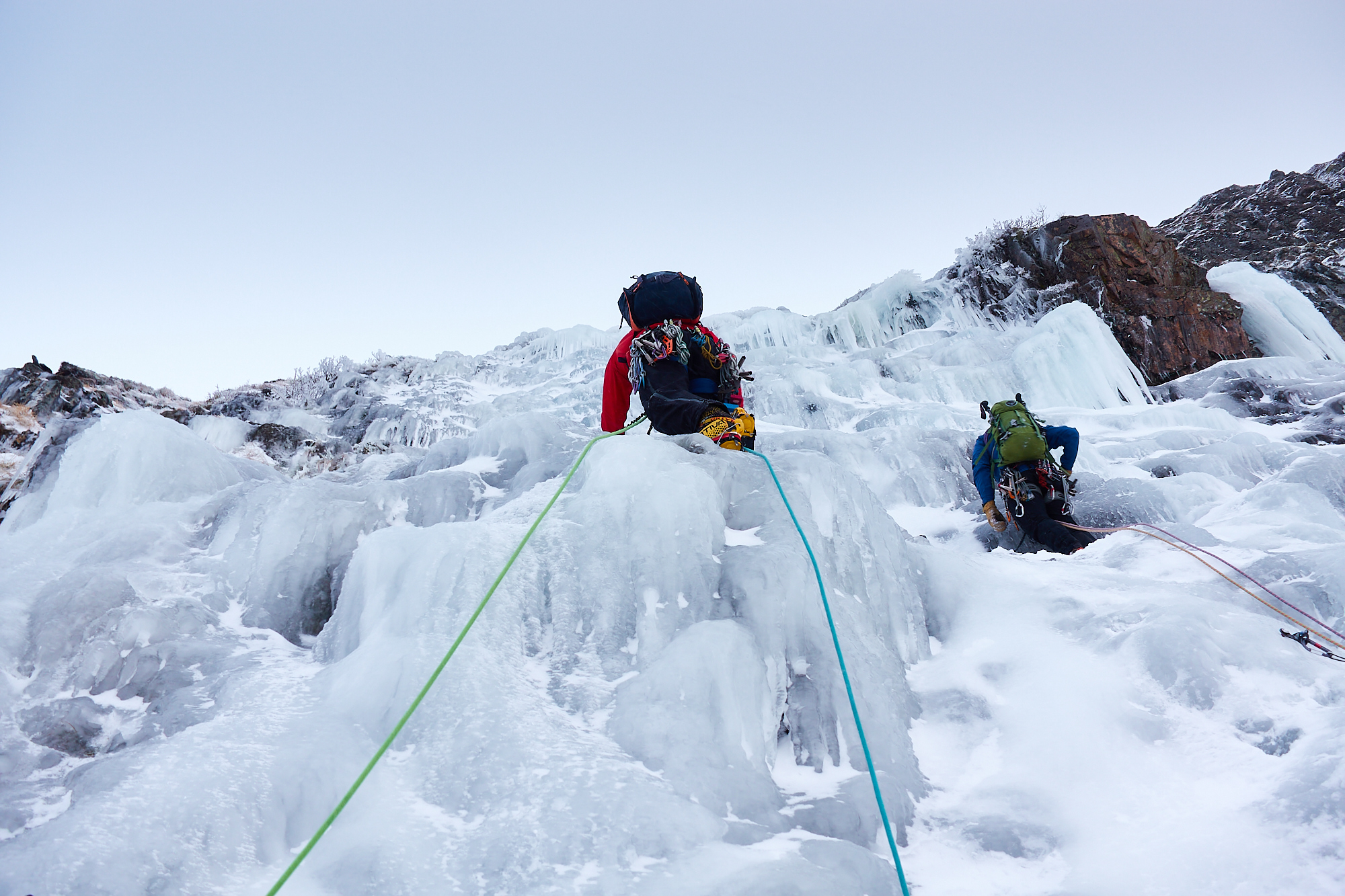
There was space for both teams to climb independent lines on the steeper ice above and it was pleasant chatting as we each negotiated one bulge after another. It wasn’t overly steep and the featured nature of the ice made finding stress-free stances to place screws easy. The ice was still thin in places though and it wasn’t a case of banging in a screw whenever you felt like it.
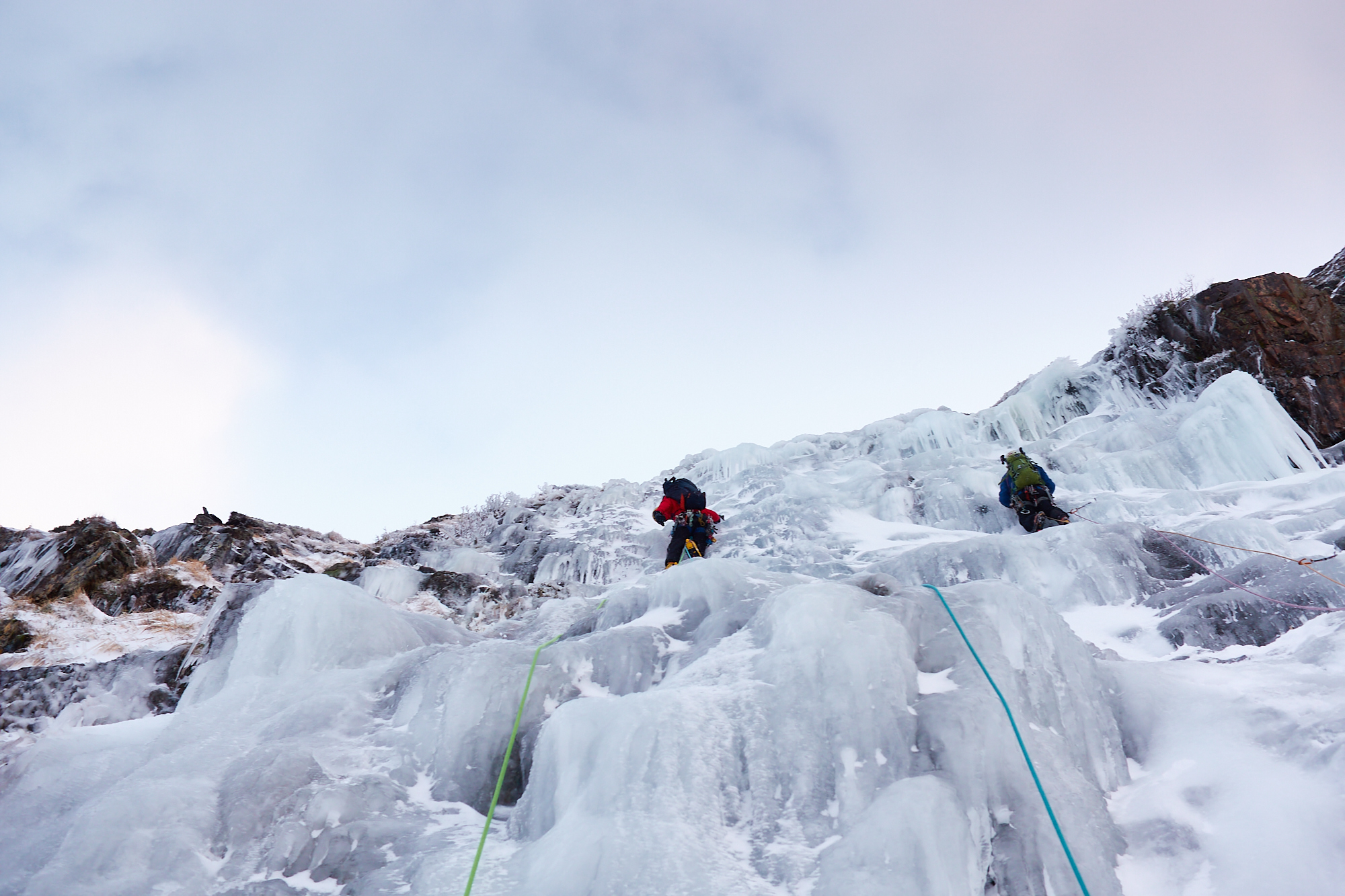
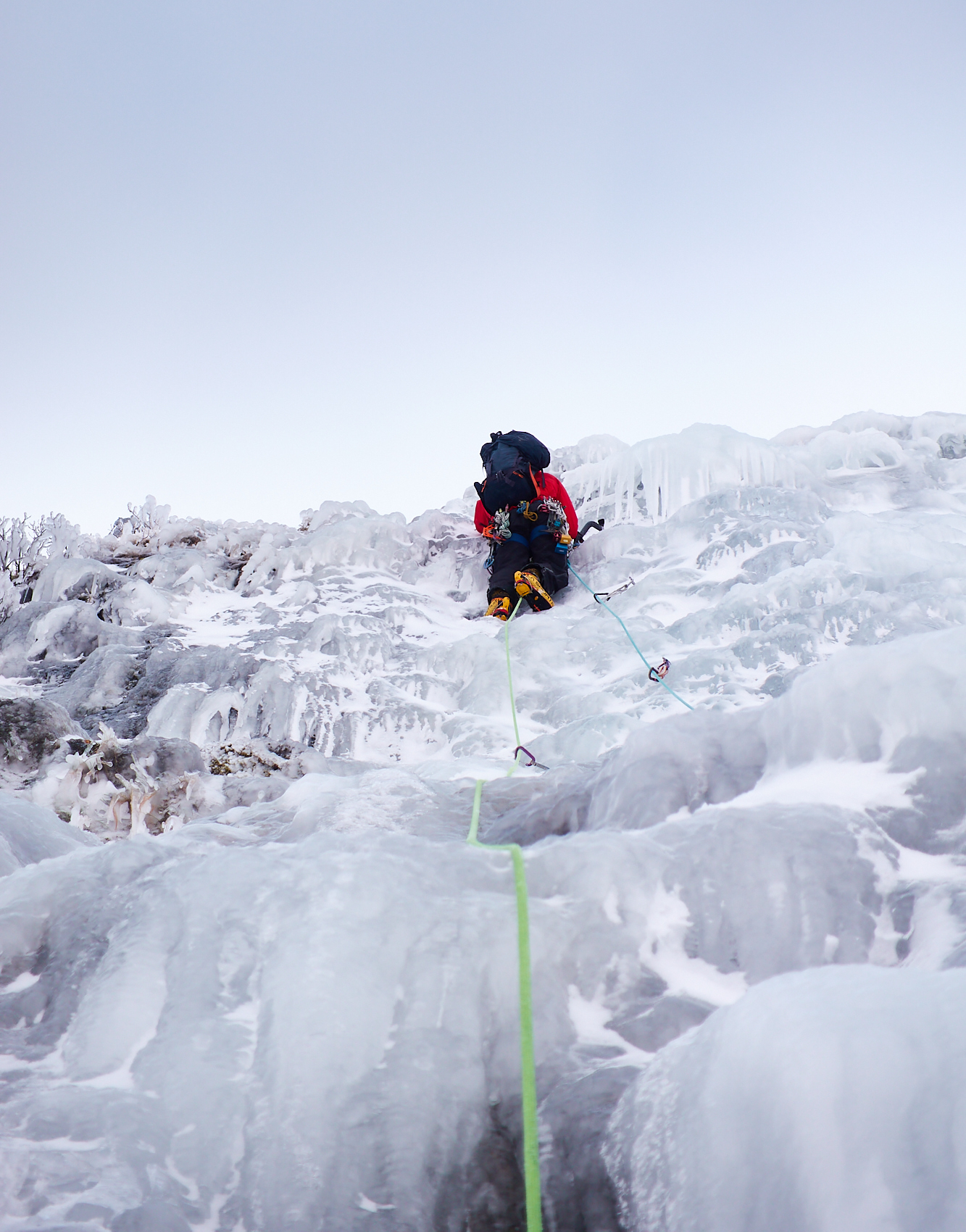
Above the steeper section the route eases off and narrows, until the easy gully above is reached. Thankfully there was room for two to belay on rocks on the left and we brought up the rest of the gang as dusk fell and the wind picked up. Bill and Cal, with head torches on, led straight through and scrambled up to the plateau where we quickly packed up and prepared for some nighttime navigation over Carn an Tuirc. Not wanting to repeat the epic walk-in we decided to head down to Glenshee by the shortest route, hoping to blag a lift back to the car.
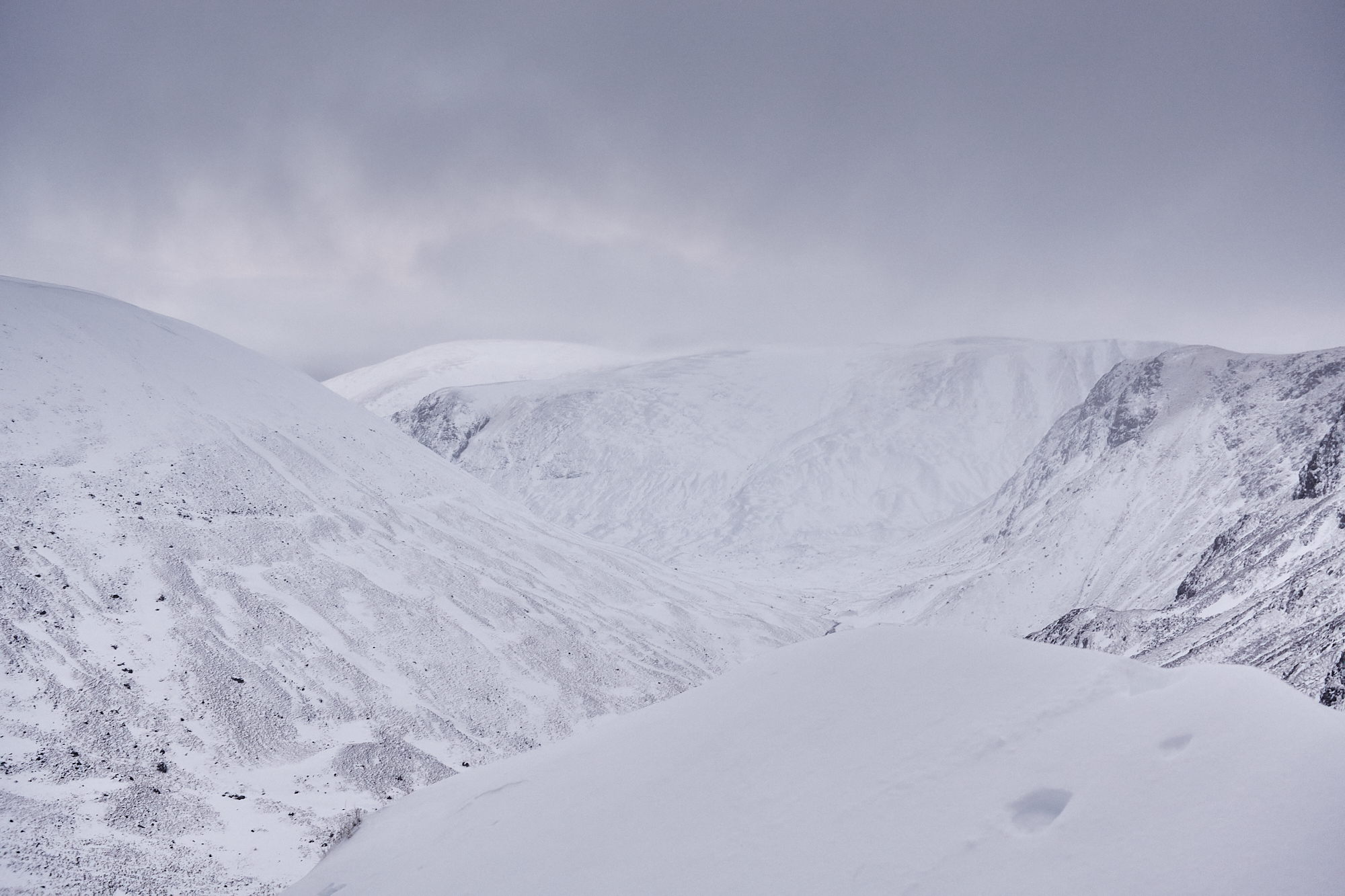
Bill and Cal got us safely over the Munro and we headed down into the glen, negotiating snow-covered heather and bottomless drifts, that at one point swallowed me whole! The other team were ahead and we didn’t expect them to wait but unbelievably Bill’s dad met us at the road and saved us an 8km walk back to the car. Legend!
I expect routes in Coire Kander are in condition more often than the UKC logbooks would suggest. They would undoubtedly see more traffic if the coire was more accessible, but the remoteness and lack of info (compared to, say, Beinn Udlaidh) no doubt puts people off going for a look. Hopefully this write-up encourages folk to make the trek in there next time we have a cold snap!
